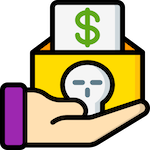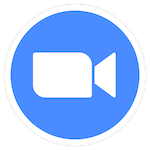As we plan for the return to on-campus, in-person learning in the Fall, Technology continues to explore “HyFlex” options for the classroom if the necessity arises to deliver courses in-person and online contemporaneously. Expanding our Zoom Rooms capability to designated classrooms and providing similar functionality to others via mobile equipment deployments will ready us for pandemic related contingencies. Stay tuned for more information.
Fraudulent Student Employment Advisory
Colleges and universities in the area have received reports of fraudulent employment scams targeting students at their respective schools. Scammers are falsely representing themselves as educators looking for research assistants. It is reported that once students agree to the employment, they are instructed to perform a variety of tasks such as purchasing gift cards and forwarding redemption codes or sending money directly through digital payment apps.
Pay close attention to employment offers where an email or job posting:
- Does not clearly indicate the company name
- Comes from an email address that does not match the company’s email address format
- Does not give the employer’s contact information such as the title of person sending the email, the company address, phone number, etc.
- Offers a job with little interaction
- Asks to pay an application fee or asks you to transfer money from one account to another
- Asks to give your credit card or bank account numbers
- Asks to send copies of personal documents
Remember: DO NOT provide any personal information, especially Social Security numbers or financial information without verifying the identity of the recipient.
If you think that you have been contacted in relation to a scam of this nature, or have fulfilled requests of a suspicious nature, please contact Technology’s Information Security Analyst, [email protected], or call Public Safety at 617-521-1112.
Icon made by Smashicons from www.flaticon.com
Important Zoom Update
Effective Sunday, April 25th, Zoom will be enabling new features in the Zoom for GSuite/Google Calendar Add-On that will prompt all users to reauthorize Google’s access to contacts and the directory. Users will only need to reauthorize once. Reauthorization will be required in order to continue using the add-on’s schedule meetings functionality. If the user declines the reauthorization, the Zoom for GSuite/Google Calendar Add-On will no longer be able to schedule meetings.
Workday Availability / Freeze
In preparation for our Workday Student move to production, new student employee hiring will be frozen from February 8th through March 1st. Student employees who previously exist as workers in Workday can be rehired during this period. Students currently working during this period will continue to work and be paid as usual.
Additionally, there will be a Workday production freeze beginning Wednesday, February 24th at 4pm until Monday morning, March 1st. Workday will be unavailable for all functions during this time. Please contact [email protected] with any questions or concerns.

